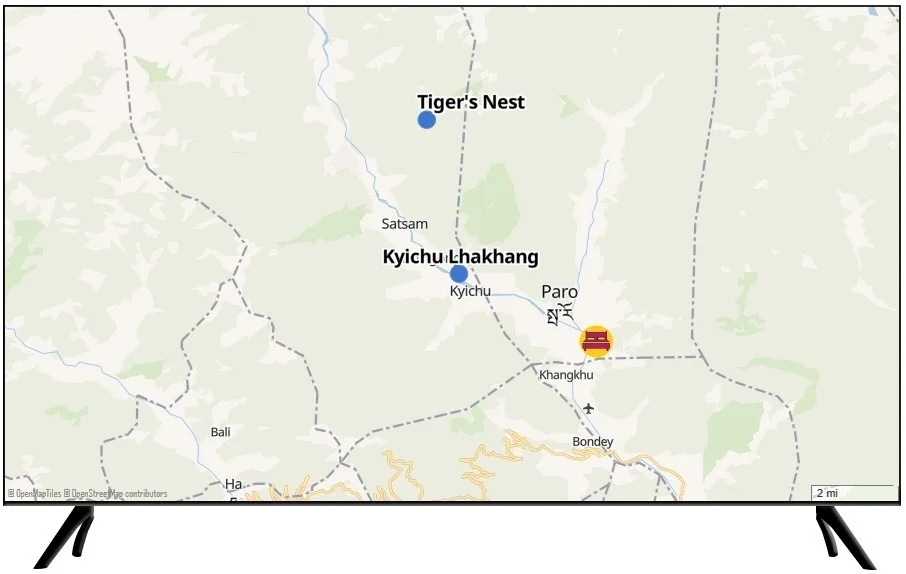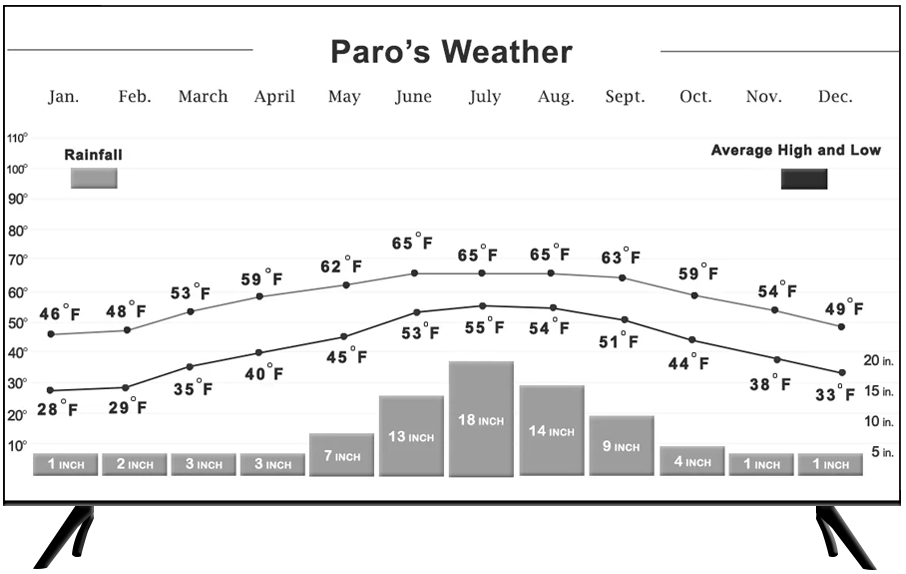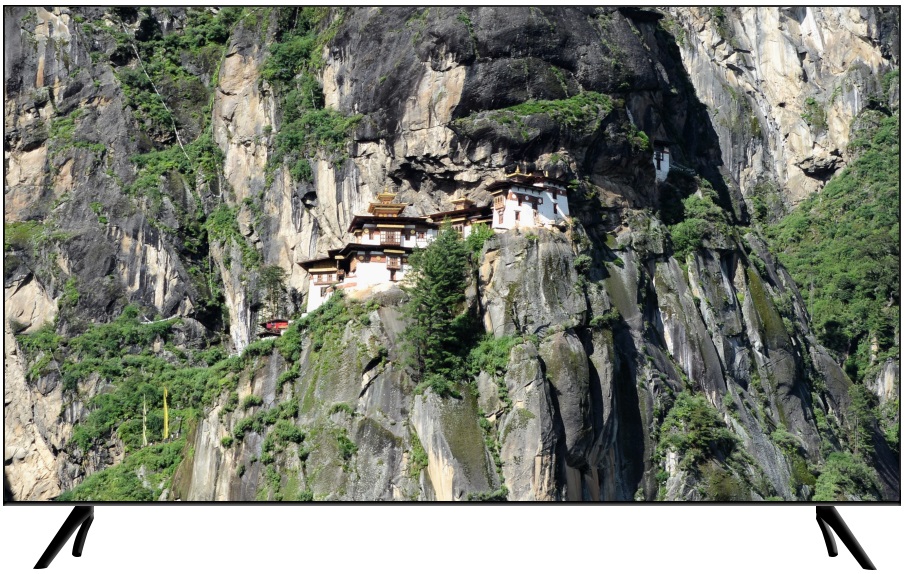


Day 7. Paro
Overnight – Como Uma Paro
Proceed for an excursion to Taktsang (Tiger’s Nest) monastery, the most famous Bhutanese monastery, and the nation’s signature landmark. A packed snack will be provided by your lodge for this excursion. Perched precariously on a small bluff on the side of a mountain, 3000 feet (900 meters) above the Paro valley, its actual elevation is 10,240 feet (3120 meters). Guru Rinpoche (also known as Padmasambhava in Himalayan India, Tibet and surrounding regions) arrived here in the 8th century and meditated in a mountain cave for 3 years, 3 months, 3 weeks, 3 days and 3 hours. The original monastery was built in 1692 but has since expanded and the main building of the monastery burnt down in 1998 but has since been reconstructed.
The incredibly scenic monastery has to be experienced to be believed – no photo can do it justice. The guided trek up to, and down from, the monastery takes three to five hours, depending on whether you are fairly fit, or a very experienced, trekker. There are ponies available for those who do not want to make the trek. Even if you choose not to take the trek or even go up to the monastery, visiting this valley for its incredible views is a must.
The path to Tiger’s Nest takes you to a vantage point that is actually a little above the monastery, and there is a café located here for refreshments. This is where most of the published photos of the monastery are taken from – there is no view of the whole monastery once you actually get up to it. You will now proceed to descend for a while before climbing again to arrive at the Tiger’s Nest. Enjoy an exploration of the monastery and experience the lives of the monks that inhabit this legendary campus. The Bhutanese believe that Guru Rinpoche arrived here riding on a flying tigress, which some legends say was Queen Yeshe Tsogyal (his consort, and the mother of Tibetan Buddhism) who was transformed into a tigress for this journey. The cave where Guru Rinpoche meditated is called Pel Pfuk, and the monastery is built on the bluff adjoining it and other caves, such as Tholu Pfuk, the cave that he first entered upon arrival.
Afternoon – return to the valley and drive back to Paro, stopping at Kyichu Lhakhang, one of the oldest and most sacred shrines of the Kingdom. The original structure of this temple was constructed in the 7th century by a Tibetan king, but many repairs and renovations have occurred over the centuries. There is a small steady stream of Paro’s residents visiting the shrine to pray, and the two orange trees in its compound are said to bear fruit throughout the year. Head back to your lodging at Paro after this excursion.
Proceed for an excursion to Taktsang (Tiger’s Nest) monastery, the most famous Bhutanese monastery, and the nation’s signature landmark. A packed snack will be provided by your lodge for this excursion. Perched precariously on a small bluff on the side of a mountain, 3000 feet (900 meters) above the Paro valley, its actual elevation is 10,240 feet (3120 meters). Guru Rinpoche (also known as Padmasambhava in Himalayan India, Tibet and surrounding regions) arrived here in the 8th century and meditated in a mountain cave for 3 years, 3 months, 3 weeks, 3 days and 3 hours. The original monastery was built in 1692 but has since expanded and the main building of the monastery burnt down in 1998 but has since been reconstructed.
The incredibly scenic monastery has to be experienced to be believed – no photo can do it justice. The guided trek up to, and down from, the monastery takes three to five hours, depending on whether you are fairly fit, or a very experienced, trekker. There are ponies available for those who do not want to make the trek. Even if you choose not to take the trek or even go up to the monastery, visiting this valley for its incredible views is a must.
The path to Tiger’s Nest takes you to a vantage point that is actually a little above the monastery, and there is a café located here for refreshments. This is where most of the published photos of the monastery are taken from – there is no view of the whole monastery once you actually get up to it. You will now proceed to descend for a while before climbing again to arrive at the Tiger’s Nest. Enjoy an exploration of the monastery and experience the lives of the monks that inhabit this legendary campus. The Bhutanese believe that Guru Rinpoche arrived here riding on a flying tigress, which some legends say was Queen Yeshe Tsogyal (his consort, and the mother of Tibetan Buddhism) who was transformed into a tigress for this journey. The cave where Guru Rinpoche meditated is called Pel Pfuk, and the monastery is built on the bluff adjoining it and other caves, such as Tholu Pfuk, the cave that he first entered upon arrival.
Afternoon – return to the valley and drive back to Paro, stopping at Kyichu Lhakhang, one of the oldest and most sacred shrines of the Kingdom. The original structure of this temple was constructed in the 7th century by a Tibetan king, but many repairs and renovations have occurred over the centuries. There is a small steady stream of Paro’s residents visiting the shrine to pray, and the two orange trees in its compound are said to bear fruit throughout the year. Head back to your lodging at Paro after this excursion.

